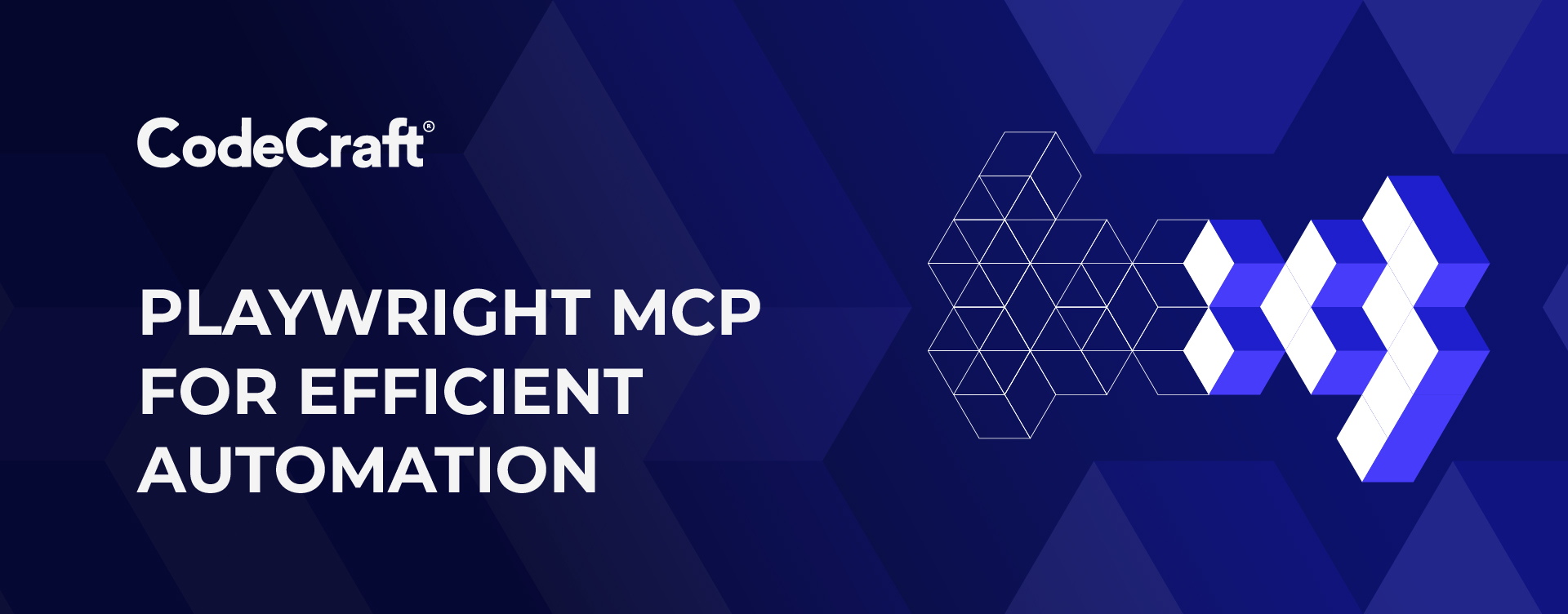Automation testing has advanced rapidly, with Playwright emerging as a leading tool for cross-browser, end-to-end testing. Now, with AI-driven workflows, MCP (Model Context Protocol) takes automation further by simplifying integration into development pipelines and enabling smarter, faster, and more efficient testing across platforms.
In this blog, let’s break down what Playwright MCP is, why it matters, and how it makes normal automation testing faster, smarter, and more efficient.
By Arun M | Oct 2, 2025
What is Playwright MCP?
Playwright is an open-source automation framework by Microsoft that enables end-to-end testing across modern browsers (Chromium, Firefox, WebKit) and platforms. It is widely used for UI automation, API validations, and cross-browser compatibility checks.
MCP (Model Context Protocol) in the context of Playwright extends its capability by introducing a middleware server layer between the test scripts and the application under test.
- The MCP server acts as a controller/manager for Playwright execution.
- It provides a centralized orchestration layer to manage test flows, environment configurations, APIs, and integrations.
- This allows Playwright to move beyond simple browser automation into a scalable, enterprise-grade test automation solution.
👉 In short : Playwright MCP = Playwright + Middleware orchestration + Advanced integration capability.

When paired with Playwright, MCP enables:
- Smart test creation → Generate Playwright tests directly from natural language.
- Context-aware assistance → AI understands your project structure, selectors, and code.
- Seamless integration → Connect Playwright to IDEs, CI/CD pipelines, and even AI assistants.
In short, MCP helps developers and testers go from “manual test writing” to “AI-assisted test automation”.

Traditional Playwright automation already provides cross-browser, cross-platform support, but writing and maintaining tests can still be time-consuming. MCP helps in several ways:
1. Natural Language to Tests
Instead of manually coding every test step, you can describe scenarios like:
👉 “Login to the app, search for a product, and verify the price is displayed.”
Playwright MCP can generate the corresponding test script instantly.
2. Context Awareness
Since MCP gives AI access to your project’s context, it can generate tests based on your existing page objects, utilities, and coding style.
3. Integration with Pipelines
MCP lets Playwright tests run seamlessly in CI/CD setups with minimal manual configuration.
4. Collaboration Boost
Non-technical team members (like QA analysts or product managers) can define tests in plain English, while MCP translates them into executable Playwright scripts.
Example: Normal Playwright Test vs Playwright MCP
Without MCP (Manual test): This is the sample code for launching an application and automate login Page.

With MCP (AI-assisted):
- You describe: Open “example.com” in chrome & “Login with testuser, password123, and verify welcome message appears.”
- MCP + Playwright generates the test automatically, reusing your existing locators and structure.

Who Benefits from Playwright MCP?
- QA Engineers → Faster script writing, fewer maintenance headaches.
- Developers → Less time coding repetitive tests, more focus on features.
- Product Teams → Ability to express requirements in natural language.
Final Thoughts
Playwright MCP is more than just a buzzword – it’s a step toward smarter, AI-assisted test automation. By combining Playwright’s powerful cross-browser testing with the flexibility of MCP, teams can:
- Write tests faster
- Reduce maintenance effort
- Improve collaboration
- Integrate AI naturally into their workflows
As the ecosystem around MCP grows, expect automation testing to become more intuitive, scalable, and accessible to everyone involved in software delivery.
A simple example for creating Playwright POM model using a single command

In the next part of this series, we will dive into a detailed comparison of Selenium MCP vs Playwright MCP – exploring which one fits best for modern automation testing.


 Banking
Banking
 Healthcare
Healthcare
 Energy
Energy
 Manufacturing
Manufacturing
 Education
Education
 Highlights
Highlights
 Blogs
Blogs
 Whitepapers
Whitepapers